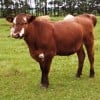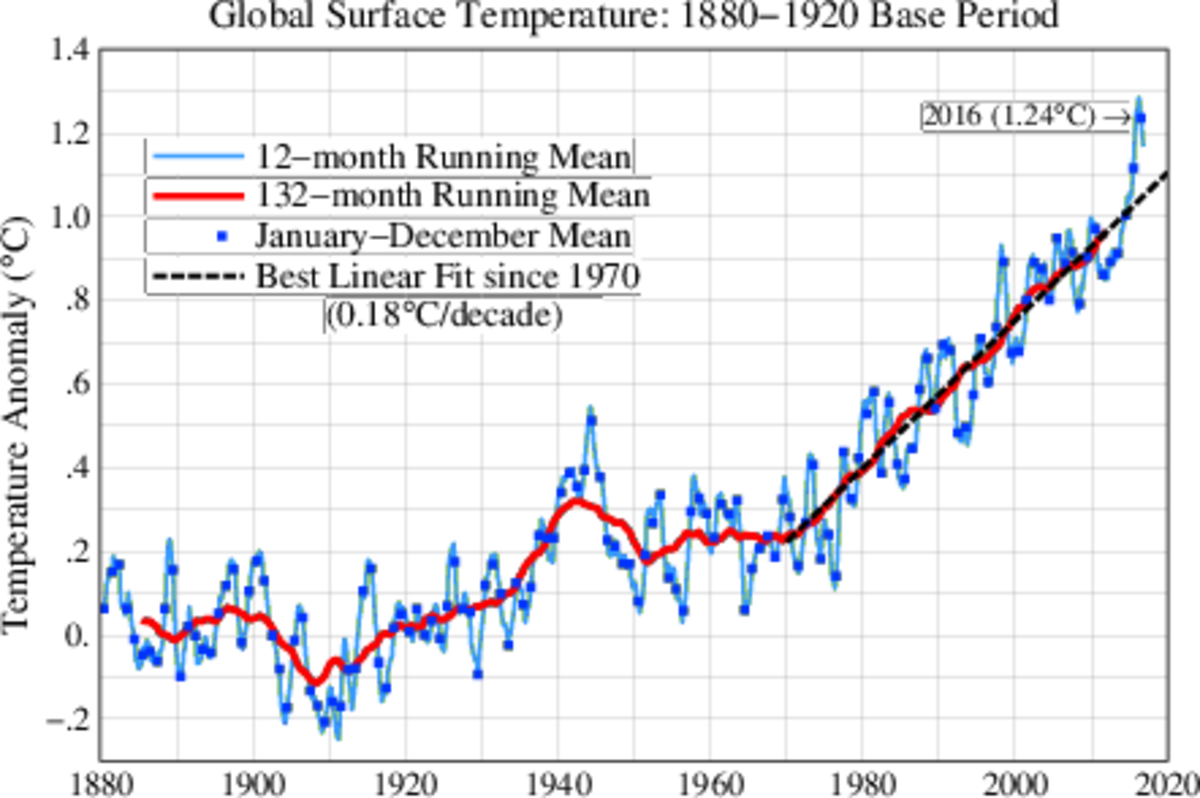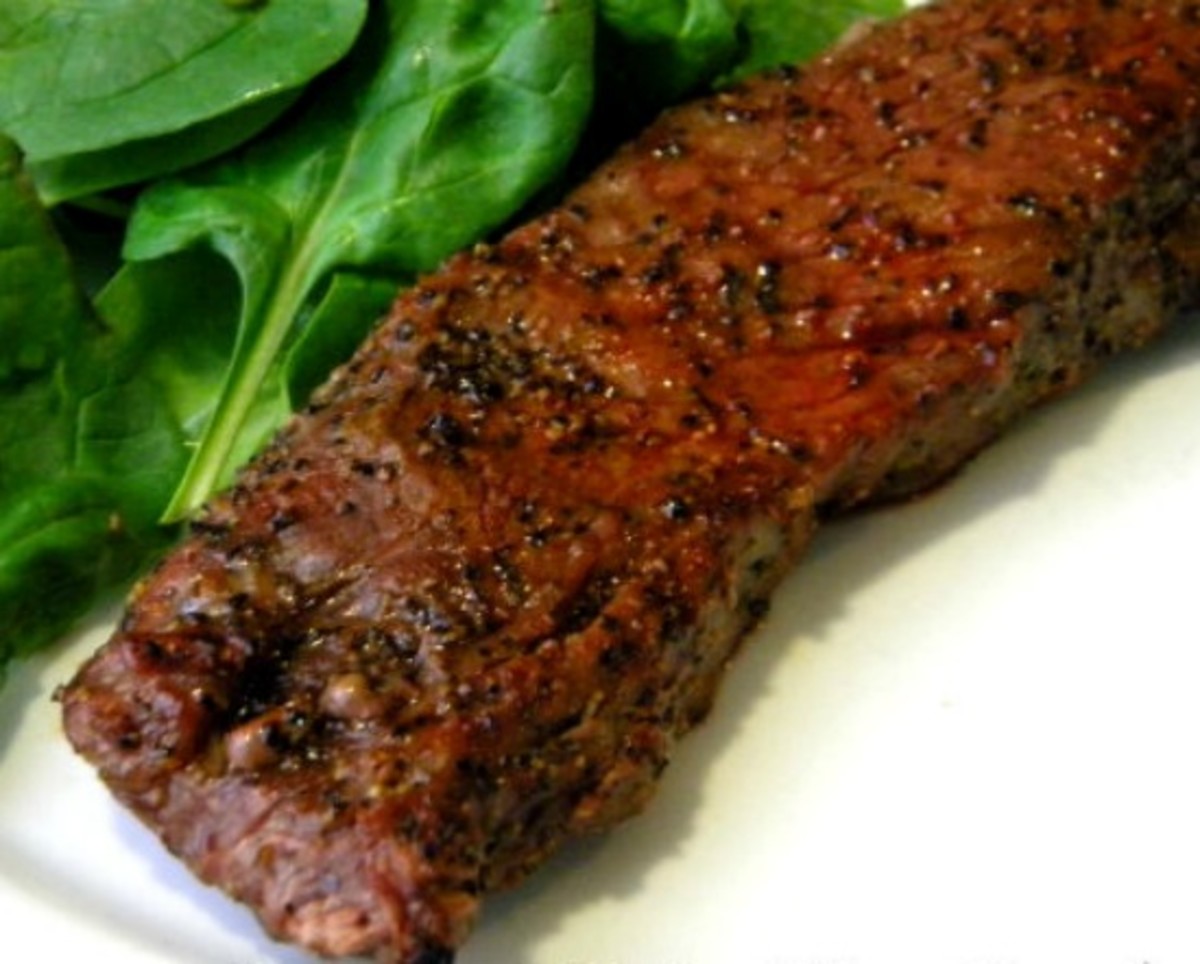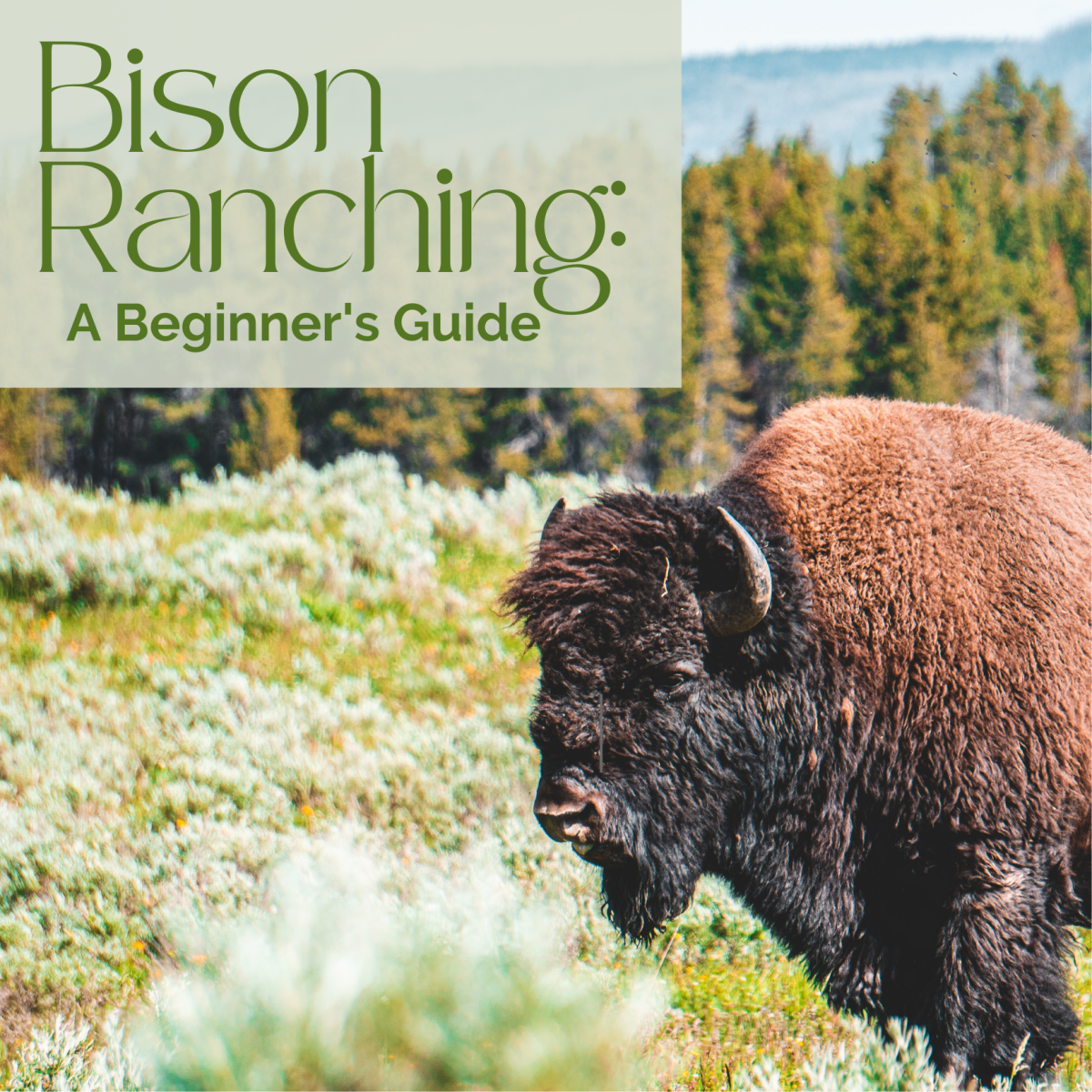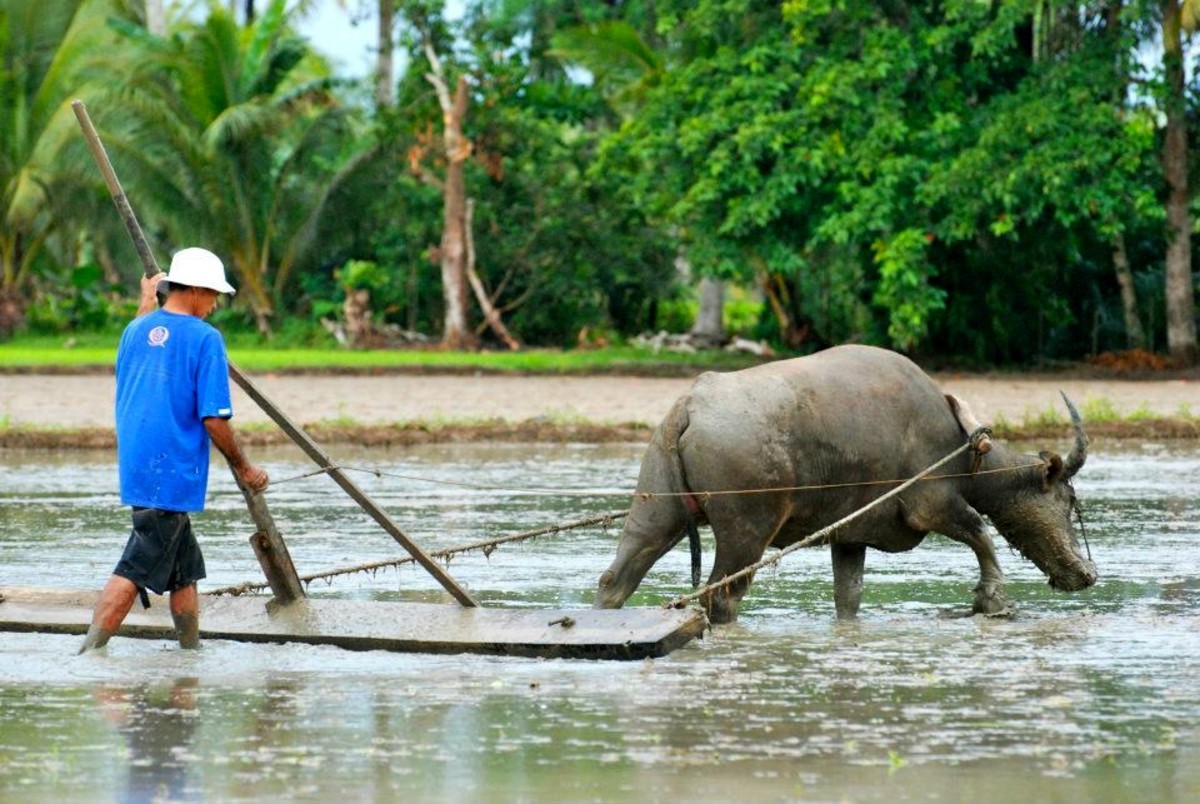What's Right With Grass-fed Beef Part II
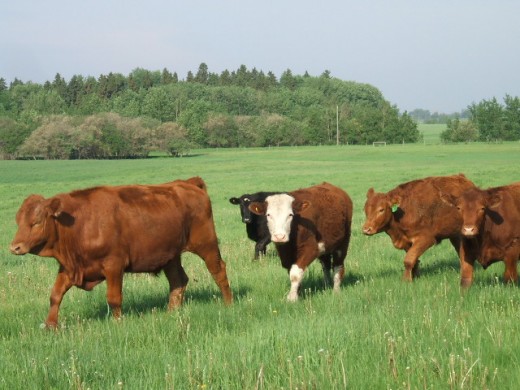
In continuation from the hub What's Right With Grass-fed Beef comes the second part to the refutations and arguments expressed in response to the About.com Animal Rights article What's Wrong with Grass-fed Beef. In the hub previous to this I discussed the proponents of land use, allocation of resources in grass-fed operations versus feedlot, and a few other things. In this hub I will attempt to counter the statements made about marginal land use and greenhouse gas emissions with pasture-fed versus feedlot beef. Be prepared for a bit of ranting too.
Use of Marginal Land
I just love how the author to the What's Wrong With Grass-fed Beef put quotations around marginal in the subtitle Marginal Land. Puts a bit of emphasis on what she knows and understands apart from what she reads on the Internet. (Insert smiling smiley face here.)
"Some proponents of grass-fed beef argue that cattle could be raised on 'marginal' lands – lands that cannot be used for growing crops but can be used for growing grasses – so that the cows are not taking land away from human food production. Again, this is an infeasible solution."
Doubt it. Land that is infeasible for use in crop production couldn't be used for anything else except either wildlife habitat or for grazing livestock on, or both. What's so infeasible about that?
"If the land is marginal, it will not be the high quality pasture that can support a cow on a mere 2.5 acres. We are likely looking at the high end of the acreage estimate, and would require 35 acres per cow, requiring approximately 3.5 billion acres of marginal land on which to raise 94.5 million grass-fed cows. This is 5.5 million square miles, more than the entire area of the United States."
Once again, the land use factor here is where the author fails to realize that it's not "one or all" or "all or none" like so many animal rights, vegans like to think everything is. Everything is not black and white, and not all "marginal" land (as the author likes to call it) has a stocking rate of 35 acres per animal. A lot of marginal land can be far more than that or far less. "Marginal" land can even be the "conservative" estimate of 2.5 acres per animal or less if mob grazing is used or if so-called "marginal" land really isn't marginal, just too hilly for crops to be grown in but excellent for manage-intensively grazing cattle. It really depends on the location, the soil, the climate, the environment and management practices of the rancher what the true stocking rate or even stocking density for a certain area is.
Once again, the author is using the liberal estimate of 94.5 million cows, the total number of cattle estimated to be in the USA in a 2009 census. Weren't we talking about beef cattle here, not just cattle in general? Like I mentioned in the previous hub, if we exclude all dairy cows and beef cows that are already raised on a ranch on pasture, the numbers would be a lot different. So would they be if the author quit going from one extreme to the other like she loves to do with the stocking rate examples she's using.
What I can't wrap my head around is the author's inability to comprehend the fact that there's no such thing as "one or the other." Why can't there be both? Why can't she understand that land in the United States or Canada can never be treated like it has to be either 2.5 acres/animal or 35 acres/animal? Does she not know that land all over North America has its own stocking rate, carrying capacity, stocking density and the like according to where one lives? Marginal land may be land that is used for growing crops but could benefit better from being converted into pasture to be grazed by livestock! But do you think that she is aware of this? My thoughts are no, she doesn't.
I doubt she even understands the implications and benefits of grass-fed beef when it comes to the environment!
Fifty Percent More Greenhouse Gases????
Now that's taking it to the extreme!!
"[It is estimated] that pasture-raised beef results in 50% more greenhouse gases than feedlot beef."
I am really putting up the red BS flag here because once again, the author fails to give credit where credit is due. Of course cows eating a more roughage diet (which is much more natural than their consuming of grain like corn) will produce more methane, nitrous-oxide than their feedlot counterparts which are fed a high-concentrate diet, but that's only looking the trees and not the whole forest. What about the grass? What about the soil underneath? What about the natural carbon, water and nitrogen cycles at play here? Are they non-existent to this author's opinionated biased illogical explanation as to why grass-fed beef is "environmentally destructive"? Apparently they are!!
When pastures are managed properly, the costs are significantly outweighed by the benefits. Permanent pastures and grasslands act as carbon sinks, which sequesters carbon from the atmosphere and keep it there for eternity, or until the pasture gets tilled over. Water is retained much more in grasslands making them less liable to dry up in drought conditions. Nitrogen is also brought back into the soil from the plants converting atmospheric nitrogen into usable nitrogen for other plants to use. Nitrogen from the manure of grazing animals is also used by the plants. Can feedlots and cropping systems do all this? Not a chance.
Tonnes of methane, carbon dioxide and nitrous oxide are released to the atmosphere when those vast manure piles need to be moved and spread out onto the fields, or when feedlot pens are "cleaned out," meaning manure that has built up is scraped off, piled in a pile and hauled in trucks out to fields. Carbon is released every time a field is tilled, no matter if that field is being used to grow food for us humans and our vegan buddies, or for confined animal feeding operations. Thus feedlots and cropping fields act as carbon sources, a source of carbon released to the atmosphere. So not only is the natural carbon cycle disrupted every time a tractor goes over a field with a cultivator, so are the water and nitrogen cycles.
Certainly makes the vegan lifestyle sound not so environmentally-friendly, now does it?
"Because the cows fatten up more slowly on grass, they eat more grass, emit more methane and nitrous-oxide than they would if they were eating grain in a feedlot."
True, but the grass doesn't simply stop growing as soon as a cow clamps down on it with her mouth. Nor is she eating on bare earth that cannot sequester or bring back the carbon, hydrogen, nitrogen and oxygen that she emitted out of both ends. Grass are plants too just like the giant trees of the Amazonian rainforest, able to "inhale" carbon dioxide and "exhale" oxygen and water, thus bringing in the "50% more greenhouse gases" that the cow just emitted and putting it all back into the soil where it belongs. Quite frankly, the grazing action of cattle is beneficial for the majority of grass species and all grasslands, encouraging grasses to grow and thrive over those that would just suffer and allow themselves to be overtaken by alien grass species that thrive on no grazing.
Managed intensive grazing is one type of grazing that has proven to be beneficial to not only the grasses themselves, but to the environment as well. It mimics the hoof-action and grazing intensity of the once-massive American buffalo herds on the native grasslands, only difference is that fences and cattle are being used instead of vast bison herds. MIG doesn't just stop in the spring, summer and fall. Oh no, if you're going to be grazing cattle on pasture, you might as well have them on all-year round, just like with the bison.
"Also, most of those vast pastures are enhanced with fertilizers."
Once again, the author just had to use the words "vast pastures" again. Aren't "vast fields" of vegetables and crops enhanced with fertilizers as well? Gee, I heard it was a lot more costly to fertilize a crop field than it is with a pasture that is grazed properly, AND if it's managed intensive grazed! With proper grazing, proper management and all that jazz, it eliminates the need for pastures to be "enhanced with fertilizers," because the animals are doing it for you. That's the beauty of grazing cattle, is that their manure is what is used by the plants that these animals graze to grow again.
Winter grazing like swath grazing, bale-grazing and stockpile grazing also help with this, keeping cows out of the feed yard and on pasture, preventing the producer from using more fuel to fire up the tractor every day during the winter, less long, cold hours spent feeding the animals and more chances of getting the animals to work for you. There's less feed and fertilizer to spend as well. Vast amounts of CO2 and Methane aren't going to be released to the atmosphere when the pens have to be cleaned out and spread out onto the fields every spring, like what always happens with feedlots. The manure stays out on the pasture where the cow left it. No equipment required.
Here's some more things to consider: If a person thinks that grazing cattle out on pasture is so bad, what about all those bison that were out on the plains before the white man shot them to near extinction? Obviously they have the same digestive tract as the Domestic Cow, with their belching and flatulence and their releasing of greenhouse gases to the atmosphere eating nothing but the very grasses that grew on the native grasslands they roamed on, so wouldn't they also may have been blamed for the same issues that animal rights groups, vegans and environmental activists are clamoring about with domestic cattle? And what about the millions of herbivores that roam across the African Plains, the Serengeti, with digestive systems like that of your average Ol' Bessie the Cow? Do they not contribute or have contributed to the "increase" of methane and nitrous oxide emitted to the atmosphere? Of course they do!! Oh, and we can never forget about Homo sapiens, the culprit of it all, nor the natural forces and features of Earth like volcanoes, oceans, swamps, lakes, earthquakes and the like doing their fair share of emitting vast amounts of greenhouse gases to the atmosphere, a lot more than what a bunch of cows on pasture can do. I don't know about you, but I think that blaming the cow for all our troubles with the Greenhouse Effect and Climate Change is a bit ludicrous and irresponsible.
Part Three to Follow...
That's right, What's Right With Grass-fed Beef part 3 will follow with statements on wildlife conservation and crops with or without livestock. Stay tuned for more...
